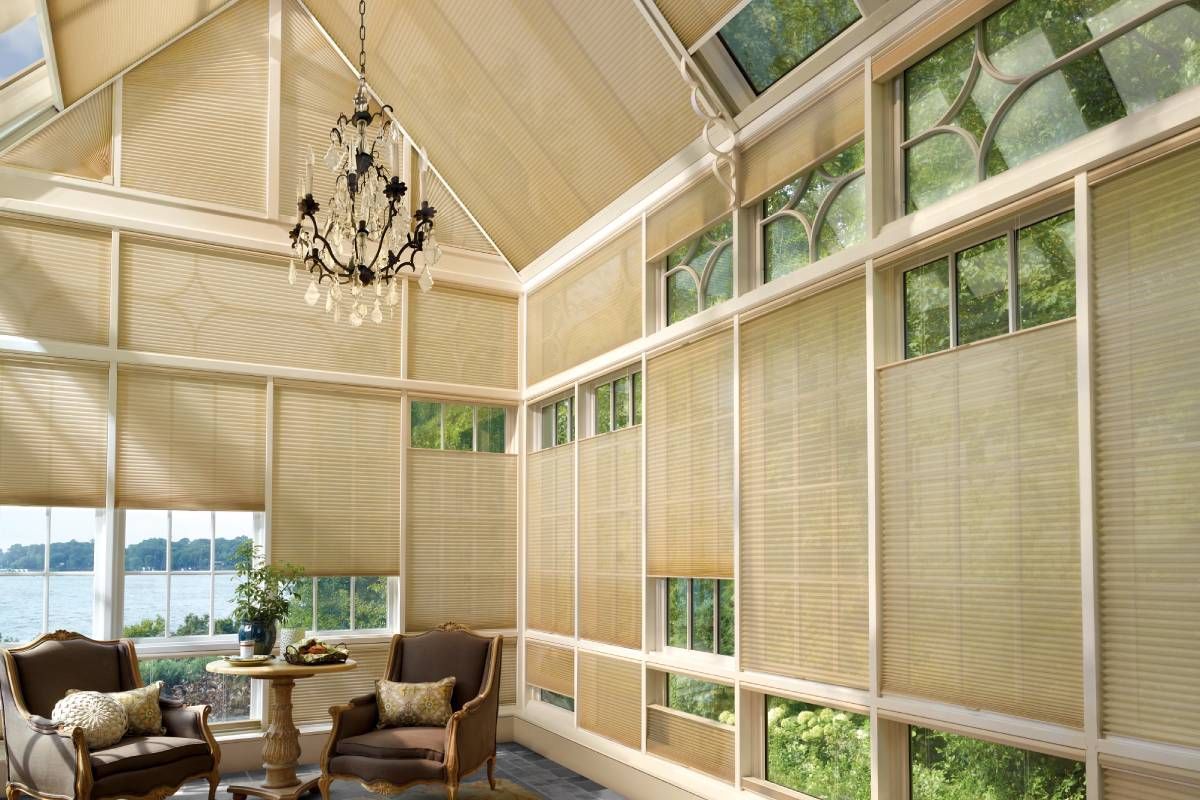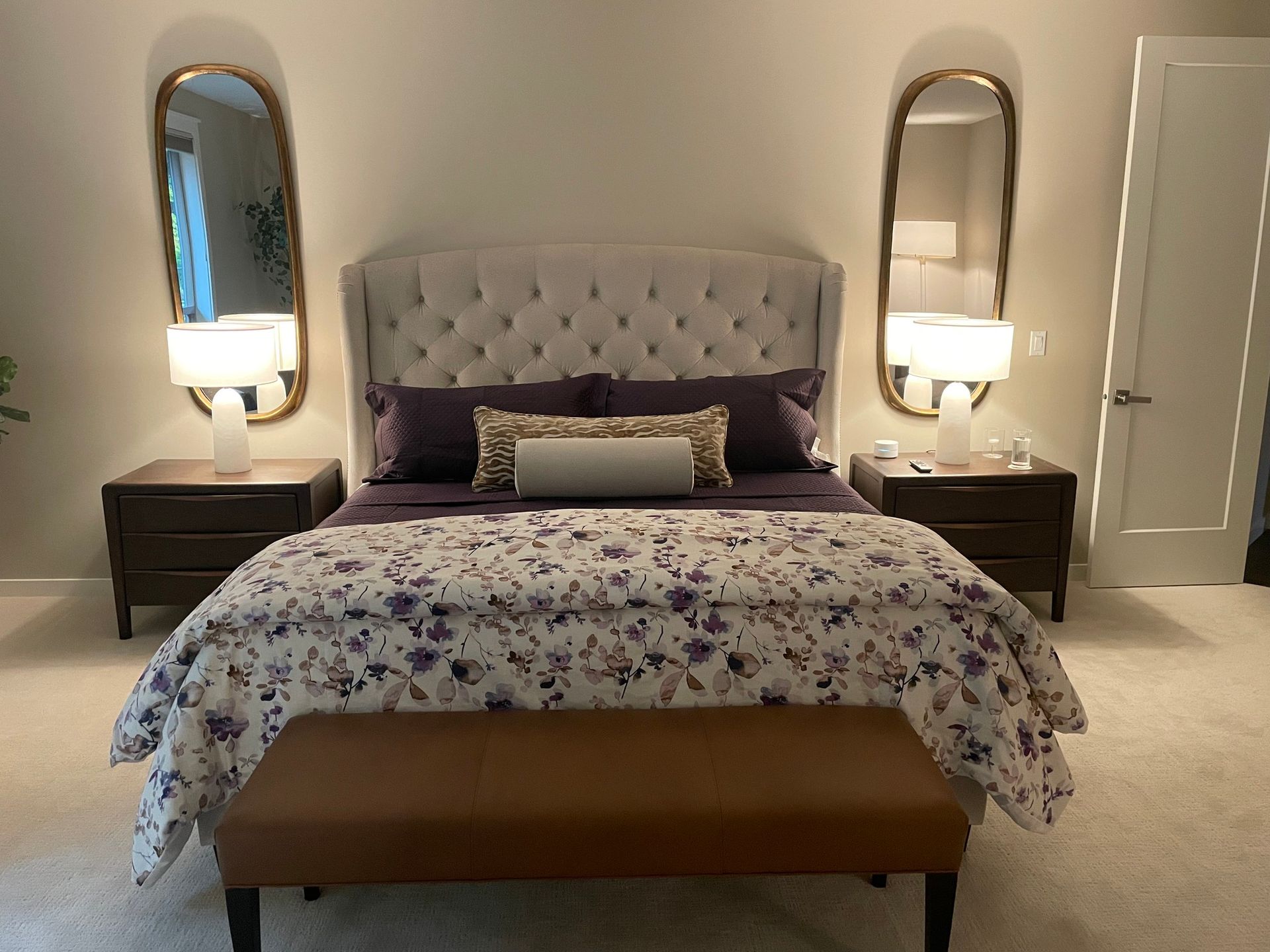6 Advantages of Top Down Bottom Up Shades
Top Down Bottom Up Shades, a Great Choice for Any Home

Top down bottom up shades represent a remarkable innovation in window treatments, combining superb functionality with sleek design to offer superior control over privacy and light. This type of shading solution allows the user to adjust their shades from the top down or the bottom up, offering a customizable approach to natural lighting and privacy that traditional shades cannot match. Below, we explore the mechanics behind these shades, their benefits, installation procedures, and the various types available to homeowners.
GUIDE: OPTIONS FOR ECO-FRIENDLY WINDOW TREATMENTS
What Does Top Down Bottom Up Mean?
The term "top down bottom up" refers to a versatile window shade system that can be opened from the top or the bottom. This functionality provides the unique advantage of allowing light to enter from above while maintaining privacy below, or vice versa. It is an ideal solution for those seeking optimal control over their indoor lighting and visibility from the outside, without compromising on the aesthetic value of their window coverings.
What Are the Advantages of Top Down Bottom Up Blinds?
Light Control
One of the primary benefits of top down bottom up blinds is enhanced light control. These blinds offer the ability to fine-tune the amount of light entering a room by adjusting the shade's position either from the top down or the bottom up. This feature is particularly advantageous in spaces where direct sunlight can be a nuisance at certain times of the day. By allowing the user to modulate light exposure, these blinds can create a balanced, ambient environment in any room.
Light Filtering
Top down bottom up shades also excel in light filtering. They can be equipped with various materials that filter out brightness without completely blocking light, softening the indoor light quality and creating a cozy, inviting atmosphere. This is especially beneficial in rooms exposed to harsh sunlight, as it helps to mitigate glare and protect interior furnishings from UV damage without plunging the room into darkness.
Privacy Benefits of Top Down Bottom Up Shades
One of the standout features of top down bottom up shades is their exceptional ability to enhance privacy without sacrificing natural light. This dual-functionality makes them an ideal choice for rooms that require both seclusion and illumination, such as bathrooms, bedrooms, and street-facing living areas. Here’s how these innovative shades bolster privacy in any space:
Strategic Coverage
Top down bottom up shades offer a unique advantage in privacy management by allowing homeowners to adjust their coverage according to specific needs. The ability to lower the top portion of the shade permits light to enter through the upper part of the window while the lower section remains covered, protecting the privacy of the room’s occupants from outside view. This selective visibility is particularly valuable in urban environments where close proximity to neighbors or passersby can be a concern.
Customizable Visibility
The versatility of these shades extends beyond just top and bottom adjustments. They can be positioned at any point within the window frame, providing pinpoint control over the visible area. This means that you can create a small opening at either the top or bottom—or even in the middle of the window—depending on the angle of view and the level of privacy desired. Such customization ensures that you can enjoy natural lighting during the day without compromising on the seclusion needed for comfort and security.
Enhanced Room Use
With top down bottom up shades, rooms traditionally overlooked for certain activities due to privacy issues can be reimagined. A ground floor office or workout area, which may have previously felt exposed, can now be shielded from outside eyes while still welcoming plenty of daylight. This adaptability makes top down bottom up shades a smart choice for maximizing the usability of all spaces within a home.
Aesthetic and Minimal Impact
Beyond their functional benefits, top down bottom up shades maintain a sleek profile that doesn't detract from a home’s interior design. They fit snugly within the window frame, providing a clean, uncluttered look that complements both contemporary and traditional decors. This means that while they offer substantial privacy and light control, they do so with minimal visual impact, preserving the aesthetic integrity of the space.
In essence, top down bottom up shades are a transformative window treatment solution that provides superior privacy control. By allowing homeowners to adjust their level of exposure and natural light, these shades deliver a perfect balance of seclusion and openness, making them a highly effective and flexible option for enhancing privacy in any room.
How to Install Top Down Bottom Up Blinds?
Installing top down bottom up blinds is a straightforward process:
1. Measure the Window: Carefully measure the width and height of the window to ensure the blinds fit correctly.
2. Mark the Brackets: Position the mounting brackets at the designated spots on the window frame, marking the screw holes.
3. Attach the Brackets: Drill holes where you have marked, and screw the brackets securely into place.
4. Mount the Blinds: Clip the top down bottom up blinds into the brackets according to the manufacturer’s instructions.
5. Test the Blinds: Pull down and lift up to test the functionality of the blinds, ensuring they move smoothly and settle evenly.
What Are the Different Types of Top Down Bottom Up Blinds?
Honeycomb Blinds
Honeycomb blinds, also known as cellular shades, are a popular type of top down bottom up blind. These are made from soft fabrics that form 'cells' that trap air, providing excellent insulation. The honeycomb design not only helps in energy conservation but also aids in noise reduction, making them a practical choice for both private homes and professional settings.
Cordless
Cordless top down bottom up shades offer a clean, streamlined look by eliminating the need for hanging cords. This not only enhances the visual appeal but also makes these blinds safer in homes with children and pets. The cordless design uses a simple mechanism that allows the shades to be easily adjusted with a gentle push or pull, integrating seamlessly into modern, minimalistic decor.
In conclusion, top down bottom up shades are a dynamic and efficient choice for those looking to enhance their home with window treatments that offer both high functionality and aesthetic appeal. With their superior light control and privacy options, coupled with a variety of styles and safety features, these blinds can adapt to the needs of any living space, proving that practicality and design can indeed go hand in hand.
Consider These Factors When Choosing to Top Down Bottom Up Shades
Here are some key factors to consider when choosing top down bottom up shades for your home:
- Material: Top down bottom up shades come in a variety of materials, each with its own benefits. Honeycomb shades offer insulation and noise reduction, Roman shades provide a classic look, and blackout shades maximize light control for bedrooms or media rooms. Consider the function of the room and your desired level of light control when making your material selection.
- Opacity: Top down bottom up shades come in various opacity levels, from sheer to blackout. Sheer shades allow for diffused natural light while maintaining some privacy, while blackout shades completely block light for a dark sleeping environment. Choose the opacity level that best suits the needs of each room.
- Operation: Top down bottom up shades come in corded, cordless, and motorized options. Corded shades are the most affordable but may pose a safety hazard in homes with young children or pets. Cordless shades offer a clean look and improve safety, while motorized shades provide the ultimate convenience with remote control operation. Consider your budget and safety needs when choosing the operation style.
Where to Buy Top Down Bottom Up Shades
Top down bottom up shades are widely available from a variety of retailers, including home improvement stores, online retailers, and window treatment specialists. Here are some tips for finding the perfect shades for your needs:
- Shop around: Compare prices and selection from different retailers to find the best deal.
- Read reviews: Read online reviews of different brands and styles of top down bottom up shades to get an idea of their quality and functionality.
- Get samples: Many retailers offer free samples of shade materials. This allows you to see the colors and textures in person before making a purchase.
By considering these factors, you can find the perfect top down bottom up shades to enhance the style, function, and privacy of your home.




